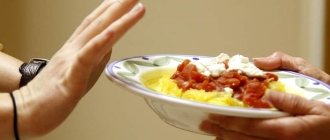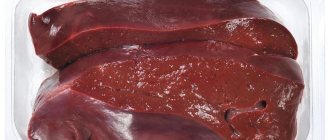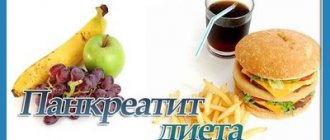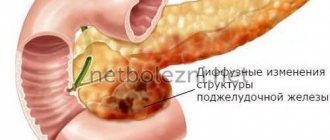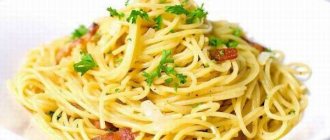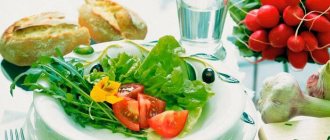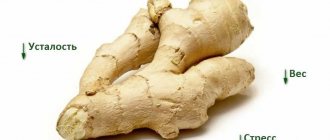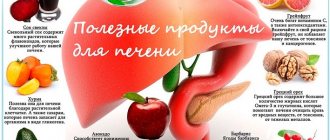Therapy for people with a diseased liver (the most common diseases are cirrhosis, cholecystitis, pancreatitis) is usually long-term. Anti-inflammatory, choleretic, and painkillers are prescribed. Diet plays an important role - it helps normalize metabolism and helps restore liver function. What should be the diet for the liver and pancreas?
General rules
Changing your diet, eating fast food that contains large quantities of fats and light carbohydrates, increasing stress load - all this serves as a background for the appearance of diseases of the gastrointestinal tract.
These diseases, to varying degrees, worsen the quality of life of patients, and it is comparable to that for diseases of the cardiovascular system. In recent years, the prevalence of these diseases has been increasing and all age groups are affected by the pathology - children and adolescents, people of working age and the elderly. During treatment, much attention is paid to dietary nutrition, the role of which is especially significant in this pathology. Table No. 5 is a universal basic diet used for diseases of the gastrointestinal tract. Varieties have been created on its basis, which makes it possible, with some correction, to use it for diseases of the liver, pancreas, gallbladder and ducts, when they are combined with colitis and gastritis , as well as after liver surgery.
The diet for diseases of the liver and pancreas should be gentle, therefore chemical and mechanical irritants are excluded or sharply limited (depending on the stage of the process). Disease of the liver and pancreas requires a diet; food intake should be small and small, and the food itself should be warm. Eating cold or hot foods is not allowed.
The general principles of nutrition for the pathology of these organs are:
- Exclusion from the diet of strong chemical irritants: essential oils of plants (onion, garlic, celery, radish, radish) and extractive substances (broths), dried and smoked foods, fried foods. To extract extractive substances, which is especially important for pancreatitis , the meat is boiled in small pieces, draining the water, and only then used as a semi-finished product for various dishes.
- Elimination of mechanical irritants in the form of coarse meats, fresh vegetables with coarse fiber and unprocessed foods.
- Eliminate the frying method when cooking. Dishes are prepared boiled or steamed. Baking without a crust is possible only with liver diseases in remission.
- A reduced amount of fats (refractory and poorly digestible ones are limited), vegetable oils are introduced, but in limited quantities for pancreatitis and calculous cholecystitis.
- Limiting foods rich in purines: animal liver, meat of young animals and birds, yeast, sardines, tuna, sprats, herring, salmon caviar, salmon, shrimp, mussels, squid, dried porcini mushrooms, smoked eel.
- Limiting table salt (up to 6 g) and egg yolks.
- Introduction of lipotropic substances that protect the liver from fatty degeneration. They are found in beef, lean fish, low-fat cottage cheese, seafood, whey, buttermilk, buckwheat and soy flour.
- Small meals with frequent meals. This promotes the regular flow of bile and pancreatic enzymes.
- Dishes are wiped or chopped during an exacerbation and in cases of severe inflammation.
During an exacerbation, nutrition should create maximum peace and help eliminate pain, so food is given pureed and liquid. The principle of small and frequent meals must also be observed, this is especially important for pancreatitis, when meals reach up to 8 times a day in small portions (50-100 g each).
For this disease, a low-calorie diet containing 60 g of protein and 50 g of fat is first prescribed. The diet consists of boiled foods of a semi-liquid consistency and mainly carbohydrate foods (decoctions of cereals, weak tea with sugar, pureed liquid porridges, pureed compotes, crackers, jelly and jelly with xylitol).
Protein products are gradually introduced: curd puddings, calcined cottage cheese in the form of paste, steamed omelet from 1-2 eggs, cream soup from boiled meat, meat and fish soufflé, steamed cutlets from lean meat. If well tolerated, add butter, pureed vegetable soups and vegetable puree (potato, carrot, beetroot). All dishes are prepared boiled or steamed. At first they are thoroughly wiped, and then crushed.
Nutrition during the acute period of liver disease is organized within Table No. 5A , and it is more varied than during exacerbation of pancreatitis:
- Steamed dishes made from twisted meat and lean fish.
- Puree or chopped boiled vegetables (potatoes, pumpkin, carrots, cauliflower and beets).
- Reduced amount of refractory fats and salt.
- Soups made with vegetable broths with pureed cereals and vegetables, puree soups seasoned with butter or cream.
- Porridges: semolina, buckwheat, rice, oatmeal, boiled in water and ground to a semi-liquid consistency. Vegetable oil is added to dishes if it is well tolerated.
- Bold cottage cheese, low-fat fermented milk products.
- Protein omelettes.
- Ripe, sweet fruits, baked and boiled, raw - only pureed.
During the recovery period, nutrition during the treatment of a diseased liver and pancreas is balanced and contains 90 g of proteins, 400 g of carbohydrates and fats - 80 g. However, the pathology of the pancreas requires adjustments and the nutrition of such patients is organized within Table No. 5P .
, exocrine gland insufficiency develops over time , which manifests itself in insufficient production of digestive enzymes. They are involved in the breakdown and digestion of carbohydrates, fats and proteins. Indigestion is manifested by signs of malnutrition in patients: weight loss and weight deficiency. Patients also develop undigested fat in their stool (steatorrhea).
In this regard, a complete diet is recommended, so the amount of protein is increased to 120-150 g (of which animal proteins should be 80-85%), and the fat content is reduced to 70 g and below (depending on their tolerance). Refractory fats are poorly tolerated by patients - they increase abdominal pain, cause diarrhea and support inflammation, so their amount is significantly reduced, and the diet is enriched with vegetable oils.
Simple carbohydrates are also limited. This is due to the fact that Langerhans cells , which produce insulin . Ultimately, this can lead to insulin deficiency and the development of diabetes . Limiting or eliminating easily digestible carbohydrates (confectionery, white bread, semolina, sugar and sweets, potatoes, rice and oatmeal) serves as a prevention of diabetes. Sometimes patients are recommended to use various sweeteners (saccharin or xylitol) when preparing jellies, compotes, mousses, jelly and even jam.
At the same time, correction of enzyme imbalance is carried out with the prescription of enzyme preparations. Diet and enzyme replacement therapy prevent the progression of fibrodegenerative changes in the gland, they reduce pain and correct digestive disorders.
Taking enzyme preparations and maintaining proper nutrition should continue for years. Reducing dyspeptic syndrome and stabilizing weight are not indications for discontinuing enzyme therapy, since most patients, even with normal weight, have a nutritional disorder, as well as micronutrient deficiency.
The diet uses foods that inhibit pancreatic enzymes: egg whites, potatoes, soybeans, oatmeal. The amount of fat is increased gradually from 50 g to 70 g, observing their tolerance. You should not consume foods with a juice effect: any broths, fried foods and alcoholic beverages.
The list of products expands during the period of remission, when the inclusion of raw vegetables and fruits is allowed. Soups can be consumed raw, and new first courses can be carefully introduced into the diet: beetroot soup, borscht and cabbage soup. The following remain contraindicated: coffee, cocoa and carbonated drinks.
Fasting days are indicated for many diseases, including pancreatitis . This kind of mono-diet allows the gastrointestinal tract to work in a gentle manner. Since fasting diets are deficient in chemical composition, they can be prescribed only for 1 day and once a week or less often for patients with pancreatitis with low nutrition. The most acceptable fasting days for these diseases are: oatmeal, cottage cheese, curd and fruit, rice and compote, watermelon, juice, pumpkin.
How to recognize liver problems?
Nutrition should be balanced
The liver is a tireless worker; it is responsible for removing poisonous and toxic components from the body. The body's protective barrier can fail under certain circumstances:
- If a person eats smoked and fried foods and they make up the lion's share of his diet;
- In case of frequent drinking;
- Unjustified and frequent treatment with antibiotics is also a strong blow to the body's defenses.
The disease does not necessarily manifest itself in a short time: many patients did not complain about liver problems for a long time, sometimes noting discomfort in the right hypochondrium and pigmentation appearing on the face. Infections, frequent stress and hypothermia can provoke malfunctions of the liver.
If a person monitors his well-being, many problems in the body can be noticed in the early stages. How liver dysfunction manifests itself:
- A person suffers from nausea and heartburn.
- The patient notices a bitter feeling in the mouth.
- People around notice a change in skin color (it becomes yellowish);
- The color of excrement changes;
- Pain begins in the liver area.
When the liver suffers, a person is diagnosed with hepatitis (inflammatory processes in this organ), cirrhosis (with this disease, the functional tissue of the liver changes to fibrous connective tissue).
In folk medicine, many liver problems are alleviated by the use of hepatoprotectors. Milk thistle is especially prized; This herb has the property of restoring liver cells. Before engaging in herbal medicine, the patient must undergo a full examination by a gastroenterologist or hepatologist - this specialist knows modern methods of treating the liver.
You should not ignore the first manifestations of the disease: often in advanced cases, liver cancer is diagnosed, which is difficult to fight. Patients are prescribed biochemical, immunological, and general clinical studies. The MRI method of abdominal organs is informative. Depending on the results of the examination and the patient’s well-being, treatment tactics are selected.
Patients often complain of lack of appetite, so all foods should be easily digestible and healthy. Principles for forming the daily diet of a person with liver problems:
Authorized Products
Diet for liver and pancreas disease includes:
- Soups in vegetable broths with vegetables (in case of exacerbation - ground). Cereal soups are well boiled or kneaded, seasoned with sour cream, butter or cream. The most acceptable for these diseases are puree soups.
- Boiled and grated (in case of exacerbation) potatoes, pumpkin, zucchini, carrots, cauliflower, beets, green peas. After a while, the consumption of finely chopped boiled vegetables is allowed, and during the period of remission - raw (grated carrots, cucumbers and pumpkin, peeled tomatoes).
- Porridge with water: semolina, oatmeal, buckwheat, rice. Pearl barley, corn, millet and barley are limited. Porridges are well boiled or ground, and also prepared from flour (buckwheat, oatmeal, rice) with the addition of milk. You can make a soufflé from cereals, pouring jelly or jam.
- Lean chicken, beef, veal or rabbit. Boiled chicken and rabbit are consumed in pieces; other types of meat are prepared in the form of chopped, steamed products.
- Low-fat fish (pike perch, hake, cod, pollock, perch, carp, pike, whiting), steamed - in pieces or in the form of cutlets. For pancreatitis, stewed and poached fish is not allowed, as it contains a large amount of extractive substances.
- Low-fat fermented milk products. Sour cream and milk are allowed as additives in dishes, since whole milk is poorly tolerated. You can include mild grated cheese, low-fat cottage cheese and dishes made from it in your diet. In case of calcium deficiency, which is observed in patients with pancreatitis, it is better to consume calcined cottage cheese.
- Wheat bread, dried or crackers. It is possible to eat unsweetened cookies.
- White omelettes from 1-2 eggs daily.
- Vegetable-based sauces that diversify your diet. They are prepared on the basis of unfried flour with the addition of sour cream or milk.
- Baked sweet apples and pears and pureed dried fruits. Jams, jelly, mousses and natural marshmallows prepared with xylitol. Mashed raw fruits are allowed to a limited extent.
- For liver diseases, the list of fruits is wider - all ripe fruits (except sour varieties) are allowed, baked and raw.
Table of permitted products
| Proteins, g | Fats, g | Carbohydrates, g | Calories, kcal | |
Vegetables and greens | ||||
| eggplant | 1,2 | 0,1 | 4,5 | 24 |
| zucchini | 0,6 | 0,3 | 4,6 | 24 |
| cabbage | 1,8 | 0,1 | 4,7 | 27 |
| broccoli | 3,0 | 0,4 | 5,2 | 28 |
| carrot | 1,3 | 0,1 | 6,9 | 32 |
| cucumbers | 0,8 | 0,1 | 2,8 | 15 |
| parsley | 3,7 | 0,4 | 7,6 | 47 |
| tomatoes | 0,6 | 0,2 | 4,2 | 20 |
| pumpkin | 1,3 | 0,3 | 7,7 | 28 |
| dill | 2,5 | 0,5 | 6,3 | 38 |
Fruits | ||||
| bananas | 1,5 | 0,2 | 21,8 | 95 |
| pears | 0,4 | 0,3 | 10,9 | 42 |
| apples | 0,4 | 0,4 | 9,8 | 47 |
Nuts and dried fruits | ||||
| raisin | 2,9 | 0,6 | 66,0 | 264 |
| dried figs | 3,1 | 0,8 | 57,9 | 257 |
| dried apricots | 5,2 | 0,3 | 51,0 | 215 |
| dried apricots | 5,0 | 0,4 | 50,6 | 213 |
| prunes | 2,3 | 0,7 | 57,5 | 231 |
Cereals and porridges | ||||
| buckwheat (kernel) | 12,6 | 3,3 | 62,1 | 313 |
| oat groats | 12,3 | 6,1 | 59,5 | 342 |
| rice | 6,7 | 0,7 | 78,9 | 344 |
Flour and pasta | ||||
| pasta | 10,4 | 1,1 | 69,7 | 337 |
| noodles | 12,0 | 3,7 | 60,1 | 322 |
| buckwheat noodles | 14,7 | 0,9 | 70,5 | 348 |
Bakery products | ||||
| bran bread | 7,5 | 1,3 | 45,2 | 227 |
| whole grain bread | 10,1 | 2,3 | 57,1 | 295 |
Confectionery | ||||
| jam | 0,3 | 0,2 | 63,0 | 263 |
| jelly | 2,7 | 0,0 | 17,9 | 79 |
| marshmallows | 0,8 | 0,0 | 78,5 | 304 |
| fruit and berry marmalade | 0,4 | 0,0 | 76,6 | 293 |
| paste | 0,5 | 0,0 | 80,8 | 310 |
| Maria cookies | 8,7 | 8,8 | 70,9 | 400 |
Raw materials and seasonings | ||||
| honey | 0,8 | 0,0 | 81,5 | 329 |
| sugar | 0,0 | 0,0 | 99,7 | 398 |
Dairy | ||||
| kefir 1.5% | 3,3 | 1,5 | 3,6 | 41 |
| Ryazhenka | 2,8 | 4,0 | 4,2 | 67 |
Cheeses and cottage cheese | ||||
| cottage cheese 1% | 16,3 | 1,0 | 1,3 | 79 |
Meat products | ||||
| beef | 18,9 | 19,4 | 0,0 | 187 |
| rabbit | 21,0 | 8,0 | 0,0 | 156 |
Bird | ||||
| boiled chicken breast | 29,8 | 1,8 | 0,5 | 137 |
| boiled chicken drumstick | 27,0 | 5,6 | 0,0 | 158 |
| boiled turkey fillet | 25,0 | 1,0 | — | 130 |
Eggs | ||||
| soft-boiled chicken eggs | 12,8 | 11,6 | 0,8 | 159 |
Fish and seafood | ||||
| flounder | 16,5 | 1,8 | 0,0 | 83 |
| pollock | 15,9 | 0,9 | 0,0 | 72 |
| cod | 17,7 | 0,7 | — | 78 |
| hake | 16,6 | 2,2 | 0,0 | 86 |
Oils and fats | ||||
| butter | 0,5 | 82,5 | 0,8 | 748 |
| olive oil | 0,0 | 99,8 | 0,0 | 898 |
| sunflower oil | 0,0 | 99,9 | 0,0 | 899 |
Non-alcoholic drinks | ||||
| water | 0,0 | 0,0 | 0,0 | — |
| mineral water | 0,0 | 0,0 | 0,0 | — |
| green tea | 0,0 | 0,0 | 0,0 | — |
Juices and compotes | ||||
| apricot juice | 0,9 | 0,1 | 9,0 | 38 |
| carrot juice | 1,1 | 0,1 | 6,4 | 28 |
| peach juice | 0,9 | 0,1 | 9,5 | 40 |
| plum juice | 0,8 | 0,0 | 9,6 | 39 |
| tomato juice | 1,1 | 0,2 | 3,8 | 21 |
| pumpkin juice | 0,0 | 0,0 | 9,0 | 38 |
| rose hip juice | 0,1 | 0,0 | 17,6 | 70 |
| * data is per 100 g of product | ||||
What diet to follow
The diet should be prepared by a nutritionist
For each disease, an individual list of permitted products is selected, taking into account the condition of the patient’s body. Many patients note the effectiveness of such a diet: on an empty stomach a person takes this mixture (a combination of 1 tablespoon of vodka and 2 tablespoons of olive oil). After 30 minutes, a person has breakfast with oatmeal with the addition of flax seeds.
Lunch is preceded by drinking a glass of water with lemon juice. These measures improve the flow of bile. But this method of stimulating the liver is not suitable for people with high acidity of gastric juice. Before using traditional recipes, it is worth assessing the condition of your own body.
The diet of each patient differs due to the peculiarities of the course of the disease, the severity of the process and the individual characteristics of the patient’s body. But there are general tips that are relevant for all patients:
- Lean meat and dietary fish are cooked in a double boiler.
- There are restrictions regarding dairy products: cream, sour cream, processed cheese, and fermented baked milk are excluded. The use of low-fat cottage cheese is allowed.
- What is the situation with the consumption of bakery products? Pastries and cakes are removed from the diet. You can treat yourself to crackers and products based on coarse flour.
- The basis of liquid dishes is vegetable soups with cereals; vegetarian borscht will help diversify your diet. You should avoid meat broths and mushroom soups.
- Vegetables excluded from the diet: tomato, radish, radish, onion. You cannot cook dishes with sorrel and eat garlic.
- You can have an omelet for breakfast or eat boiled whites. Eggs should not appear on the table more than 2 times a week.
A specialist will help you create a competent diet.
Fully or partially limited products
The following are excluded from the diet of patients:
- Broth-based soups, borscht, okroshka, beetroot soup, cabbage soup. The latter dishes can be carefully introduced into the diet for liver diseases.
- Coarse vegetables (white cabbage, rutabaga, radishes, turnips, eggplants, radishes), mushrooms in any form, legumes, pickled products.
- Fatty fish and meat, cooking fats, lard, goose and duck meat, stewed meat and fish, any fried foods, smoked meats, salted fish, fish roe, all sausages, canned food.
- Offal.
- Rye bread and any fresh bread, yeast baked goods, fried cheesecakes and pancakes, confectionery, puff pastry, pancakes.
- Cereals: pearl barley, corn, millet and barley are not indicated for pancreatitis. For other diseases they can be used if well tolerated.
- Raw vegetables and fruits during an exacerbation period are then introduced into the diet with caution.
- Vegetables with coarse fiber are excluded (bell peppers, radishes, horseradish, overripe peas, radishes, onions, garlic).
- Black strong coffee, grape juice, chocolate, ice cream, cocoa, jam, carbonated drinks.
- High-fat cottage cheese with high acidity, fried eggs, cream, full-fat milk, sharp cheese.
- Acidic fruits and berries (apples, cherries, cranberries) and fruits containing a lot of carbohydrates (grapes, dates, bananas), as they cause bloating and adversely affect carbohydrate metabolism.
- Seasonings and spices, horseradish, ketchup, mustard, herbs, pepper, mayonnaise.
- Alcohol.
Table of prohibited products
| Proteins, g | Fats, g | Carbohydrates, g | Calories, kcal | |
Vegetables and greens | ||||
| canned vegetables | 1,5 | 0,2 | 5,5 | 30 |
| swede | 1,2 | 0,1 | 7,7 | 37 |
| peas | 6,0 | 0,0 | 9,0 | 60 |
| bulb onions | 1,4 | 0,0 | 10,4 | 41 |
| chickpeas | 19,0 | 6,0 | 61,0 | 364 |
| salad pepper | 1,3 | 0,0 | 5,3 | 27 |
| radish | 1,2 | 0,1 | 3,4 | 19 |
| white radish | 1,4 | 0,0 | 4,1 | 21 |
| beans | 7,8 | 0,5 | 21,5 | 123 |
| horseradish | 3,2 | 0,4 | 10,5 | 56 |
| spinach | 2,9 | 0,3 | 2,0 | 22 |
| sorrel | 1,5 | 0,3 | 2,9 | 19 |
Berries | ||||
| grape | 0,6 | 0,2 | 16,8 | 65 |
Mushrooms | ||||
| mushrooms | 3,5 | 2,0 | 2,5 | 30 |
| marinated mushrooms | 2,2 | 0,4 | 0,0 | 20 |
Nuts and dried fruits | ||||
| nuts | 15,0 | 40,0 | 20,0 | 500 |
| almond | 18,6 | 57,7 | 16,2 | 645 |
Snacks | ||||
| potato chips | 5,5 | 30,0 | 53,0 | 520 |
Cereals and porridges | ||||
| corn grits | 8,3 | 1,2 | 75,0 | 337 |
| pearl barley | 9,3 | 1,1 | 73,7 | 320 |
| barley grits | 10,4 | 1,3 | 66,3 | 324 |
Flour and pasta | ||||
| vareniki | 7,6 | 2,3 | 18,7 | 155 |
| dumplings | 11,9 | 12,4 | 29,0 | 275 |
Bakery products | ||||
| buns | 7,9 | 9,4 | 55,5 | 339 |
| Rye bread | 6,6 | 1,2 | 34,2 | 165 |
Confectionery | ||||
| pastry cream | 0,2 | 26,0 | 16,5 | 300 |
| shortbread dough | 6,5 | 21,6 | 49,9 | 403 |
Ice cream | ||||
| ice cream | 3,7 | 6,9 | 22,1 | 189 |
Chocolate | ||||
| chocolate | 5,4 | 35,3 | 56,5 | 544 |
Raw materials and seasonings | ||||
| mustard | 5,7 | 6,4 | 22,0 | 162 |
| mayonnaise | 2,4 | 67,0 | 3,9 | 627 |
Dairy | ||||
| milk 4.5% | 3,1 | 4,5 | 4,7 | 72 |
| cream 35% (fat) | 2,5 | 35,0 | 3,0 | 337 |
| whipped cream | 3,2 | 22,2 | 12,5 | 257 |
Meat products | ||||
| fatty pork | 11,4 | 49,3 | 0,0 | 489 |
| salo | 2,4 | 89,0 | 0,0 | 797 |
| bacon | 23,0 | 45,0 | 0,0 | 500 |
Sausages | ||||
| smoked sausage | 9,9 | 63,2 | 0,3 | 608 |
Bird | ||||
| smoked chicken | 27,5 | 8,2 | 0,0 | 184 |
| duck | 16,5 | 61,2 | 0,0 | 346 |
| smoked duck | 19,0 | 28,4 | 0,0 | 337 |
| goose | 16,1 | 33,3 | 0,0 | 364 |
Fish and seafood | ||||
| smoked fish | 26,8 | 9,9 | 0,0 | 196 |
| black caviar | 28,0 | 9,7 | 0,0 | 203 |
| salmon caviar granular | 32,0 | 15,0 | 0,0 | 263 |
| salmon | 19,8 | 6,3 | 0,0 | 142 |
| canned fish | 17,5 | 2,0 | 0,0 | 88 |
| salmon | 21,6 | 6,0 | — | 140 |
| trout | 19,2 | 2,1 | — | 97 |
Oils and fats | ||||
| animal fat | 0,0 | 99,7 | 0,0 | 897 |
| cooking fat | 0,0 | 99,7 | 0,0 | 897 |
Alcoholic drinks | ||||
| dry red wine | 0,2 | 0,0 | 0,3 | 68 |
| vodka | 0,0 | 0,0 | 0,1 | 235 |
| beer | 0,3 | 0,0 | 4,6 | 42 |
Non-alcoholic drinks | ||||
| soda water | 0,0 | 0,0 | 0,0 | — |
| cola | 0,0 | 0,0 | 10,4 | 42 |
| instant coffee dry | 15,0 | 3,5 | 0,0 | 94 |
| sprite | 0,1 | 0,0 | 7,0 | 29 |
| * data is per 100 g of product | ||||
Fruit and vegetable crops
Vitamins and microelements enter the body along with herbs, vegetables and fruits. The list of useful and must-have products is presented:
- different types of cabbage;
- parsley, zucchini, dill;
- beets, tomatoes, cucumbers;
- artichokes, carrots.
The last two vegetables are responsible for removing toxic substances, reducing cholesterol, and restoring the acid-base balance. The products help prevent the development of cholecystitis, cholelithiasis, and support the liver.
For normal functioning of the digestive organs, it is necessary to consume flaxseed, pumpkin, sesame seeds, and sprouted grains. Algae is included in the menu to protect against radioactive chemicals and prevent organ destruction under the influence of free radicals.
The list includes legumes - they become useful only with proper cooking. Soy is not a harmful product, but its inclusion in the daily menu must be agreed with a nutritionist. Dried fruits can be used as a substitute for sweets:
- prunes;
- dried apricots;
- raisin;
- bananas;
- apples, etc.
Consumption of citrus fruits is mandatory, but subject to reasonable restrictions. A large number of tangerines, oranges, and grapefruits sometimes provoke allergic reactions. Mushrooms are allowed in small quantities due to the protein they contain, which allows them to be classified as heavy food.
Garden and forest berries are no less useful than the above-mentioned crops. Strawberries, wild strawberries, red and black currants, blueberries, and cranberries are served fresh. Canned products lose more than 50% of nutrients and burden the body more than they provide it with vitamins and minerals.
Menu (Power Mode)
During the period of remission, the patient’s diet is quite varied, but you only need to follow the permitted cooking methods. Cereal casseroles, boiled pasta and cereal soufflés are added to the diet. At the same time, limit the consumption of crumbly cereals. Small amounts of butter are added to prepared dishes.
The list of vegetables has also been expanded and includes cauliflower, beets, pumpkin, and green peas, from which you can prepare a variety of dishes. It is better for patients to eat low-fat unleavened cottage cheese, which is prepared with the addition of calcium chloride. In addition to the sweetish, fresh taste, it contains an increased amount of calcium. Souffles and steam puddings are made on its basis.
| Breakfast |
|
| Lunch |
|
| Dinner |
|
| Afternoon snack |
|
| Dinner |
|
| For the night |
|
| Breakfast |
|
| Lunch |
|
| Dinner |
|
| Afternoon snack |
|
| Dinner |
|
| For the night |
|
| Breakfast |
|
| Lunch |
|
| Dinner |
|
| Afternoon snack |
|
| Dinner |
|
| For the night |
|
Why diet
Treatment and nutrition for pancreatitis are interrelated concepts. A properly composed daily diet allows you to solve a number of important problems:
- Elimination of excess load on the inflamed pancreas, which is ensured by fractional meals and the exclusion of difficult-to-digest foods. With pancreatitis, this is a primary task.
- Ensuring complete digestion of basic nutrients. A harmoniously composed menu for pancreatitis ensures the supply of the required amount of nutrients, and an adequate amount of food consumed and balanced dishes contribute to their sufficient digestion under the influence of pancreatic enzymes.
- Prevention of re-exacerbation, because relapse in this disease in the vast majority of cases is associated with errors in nutrition. Therefore, in case of chronic pancreatitis, it is advisable to adhere to the diet constantly.
- Reducing the risk of developing diabetes. The fact is that the pancreas belongs not only to the digestive system, but is also an endocrine (hormonally active) organ. Its tissues contain special formations - the islets of Langerhans. They produce the hormone insulin, and when its production is insufficient, a person develops diabetes mellitus. Chronic or frequently recurring inflammation is fraught with gradual death of functionally active cells, including the islets of Langerhans. That is why pancreatitis is considered one of the main risk factors for the development of diabetes mellitus, and dietary errors are considered an important predisposing factor.
The diet for pancreatitis is aimed at creating conditions under which digestion will be as complete as possible.
Reviews and results
Constant adherence to a therapeutic diet is important for combined pathologies of the gastrointestinal tract, since this is required by their state of health. Patients notice that expanding their diet inevitably leads to deterioration. If the diet is followed, there is a rapid regression of symptoms. Reviews note the need for constant adherence to therapeutic nutrition and this causes difficulties, since it is necessary to prepare food individually.
- “... In addition to pancreatitis, an ultrasound scan revealed cholecystitis and gallstones. There was an exacerbation and I had to stay in the hospital. There is no need to remove the gallbladder yet, but you will have to follow the diet constantly. I strictly follow all nutrition recommendations. I switched to boiled and steamed dishes, excluded fatty and fried foods, I also eat vegetable oils carefully, as they can move the stones and cause an attack. So far I have been able to keep the disease under control: there is no pain, no bloating, and my stool has returned to normal. It’s just difficult to do it, because you have to prepare it for yourself separately”;
- “... I strictly monitor my nutrition and follow a diet constantly. I have cholecystitis and pancreatitis. It turned out that it is not so difficult to cook in a double boiler, and you can also bake in a slow cooker. I cook cutlets, quenelles, omelettes, and casseroles in it. I don’t grind soups and porridges, but if there is an exacerbation, I lightly grind them in a blender. I excluded foods that I don’t tolerate well (cabbage, grapes, millet and pearl barley porridge, fresh vegetables in large quantities). The situation is made easier by the fact that my relatives support me and do not mind eating dietary dishes”;
- “... I suffer from fatty liver and pancreatitis. There is only one treatment table for these diseases, so it is easier to prepare. Consistent adherence to proper nutrition allows you to feel good and not have exacerbations. I quickly learned how to make steamed cutlets, especially since you can make them for 2-3 days. I eat porridge, cook soups with water and don’t fry them. I often eat vegetables boiled or baked; if there is no exacerbation, I eat them raw. Constant diet food does not allow me to gain weight, so I keep my weight at the same level.”
Cereals, vegetable oils, seasonings
Cereals are one of the main suppliers of complex carbohydrates. Buckwheat, rice, oatmeal, millet porridge helps the gastrointestinal tract cleanse itself of accumulated harmful substances and enriches the body with amino acids and fiber. Nutritionists advise consuming them daily.
Soups cause a lot of controversy among modern experts. Previously, such dishes were considered useful for the normal functioning of the gastrointestinal tract, but over time their necessity was questioned. Prolonged heat treatment destroys all substances needed by the body, and the use of bones and similar ingredients during the cooking process allows opponents of soups to consider them not only useless, but also harmful (carcinogenic). After the discovery of the main source of ulcers and gastritis - the bacterium Helicobacter pylori, the old postulates about the occurrence of these diseases due to dry food became doubtful.
Recommended vegetable oils include sunflower, soybean, flaxseed, and olive. They contain tocopherol, an antioxidant that prevents the effects of free radicals and cleanses harmful and toxic elements.
Among the many seasonings, preference is given to turmeric and saffron. The first is responsible for tissue regeneration at the cellular level, the second has a positive effect on metabolism, normalizes the functioning of the digestive organs, and improves the functionality of the female reproductive department. Onions, garlic and other spicy seasonings cause more harm to the digestive organs than they do good. Myths about their exclusivity are equated with misconceptions about the indispensability of soups.
Healthy drinks include green, ginger, and herbal tea. The components included in its composition reduce cholesterol levels, remove toxic substances, and supply rutin, which normalizes liver function. Fresh juices and smoothies can be used as an analogue. Doctors are wary of home-made medicinal decoctions - they advise patients to use ready-made pharmaceutical preparations rather than brew plants collected in dubious places using an untested recipe.
Effect of Covid-19 therapy on the liver
The use of any drug does not go unnoticed. In addition to the toxic waste products of the virus, the organ is subjected to serious stress during treatment. Almost all medications prescribed to the patient exhibit pronounced hepatotoxic properties. Antibiotics that are prescribed to people with pneumonia are especially harmful in this regard.
They have a destructive effect on the functions of the gallbladder and cause serious damage to the health of the hepatobiliary system. If antibiotic therapy is prolonged, drug-induced hepatitis may develop, a disease in which serious inflammation is diagnosed. The filtration capacity of the liver deteriorates, and various digestive disorders occur.
Drug-induced hepatitis after coronavirus is a consequence of the fact that antibacterial components destroy hepatocytes. Then the liver tissue becomes inflamed, necrosis occurs, leading to severe liver failure or even cirrhosis. The condition is characterized by:
- disturbance of local blood circulation;
- blockage of the hepatic ducts by blood clots;
- violation of the production and excretion of bile;
- intestinal dysbiosis;
- allergic manifestations;
- irritable bowel syndrome;
- hemolytic problems.
Antibiotics not only destroy hepatocytes, but also change the functions of the hematopoietic system and contribute to the appearance of anemia. Many patients develop cholecystitis, a chronic inflammation of the gallbladder. If it is not diagnosed and treated promptly, stones may form. Then the person will be indicated for surgery to remove the gallbladder.
Why does the liver suffer?
Approximately every second person undergoing treatment for COVID-19 in a hospital has elevated levels of liver enzymes. Doctors often identify both laboratory and clinical signs of dysfunction of the hepatobiliary system. "Crown" is capable of striking through three main mechanisms:
- Negative impact of the virus. The bile ducts and liver contain special type 2 angiotensin-converting enzymes. They are the main target of COVID-19.
- Excessive immune response. Sometimes a person’s immune system reacts too violently to a viral invasion. It happens that his response turns out to be more dangerous than the symptoms provoked by the disease itself. With an immunological failure, many internal organs begin to function incorrectly. Complications do not bypass the liver.
- Use of hepatotoxic drugs. In case of severe corona, the patient is prescribed antibiotics, antiviral, anti-inflammatory and drugs of other groups. Many of them turn out to be toxic to the organ.
Table number 5b
In the treatment of chronic pancreatitis against the background of drug therapy, diet No. 5b (or 5 p31) is used. This option is used in patients at the recovery stage after an attack of acute pancreatitis or in the remission phase after an exacerbation of chronic pancreatitis. The list of products remains the same as for table 5a. The food served should be warm and well chopped. The main restrictions concern fatty foods and sugar, which is replaced with sweeteners, preferably stevia.
The following are strictly prohibited: alcoholic and carbonated drinks, caffeine, sweets, flour (except for dried wheat bread), smoked foods, fried foods, pickles, raw fruits and vegetables. Low-fat dairy products are added to dishes; pureed cottage cheese is allowed (preferably calcined).
The diet consists of 6-7 meals, in small portions. The patient should eat a little food every 3-3.5 hours. Per day - approximately 1500 kcal. Everything is boiled, steamed or baked without crust while warm. Salt is limited (8 g per day).
The rest of the rules remain the same, as in previous versions of table No. 5. The main difference is more frequent meals and increased mechanical sparing. This option can be used for patients with concomitant chronic gastritis.
